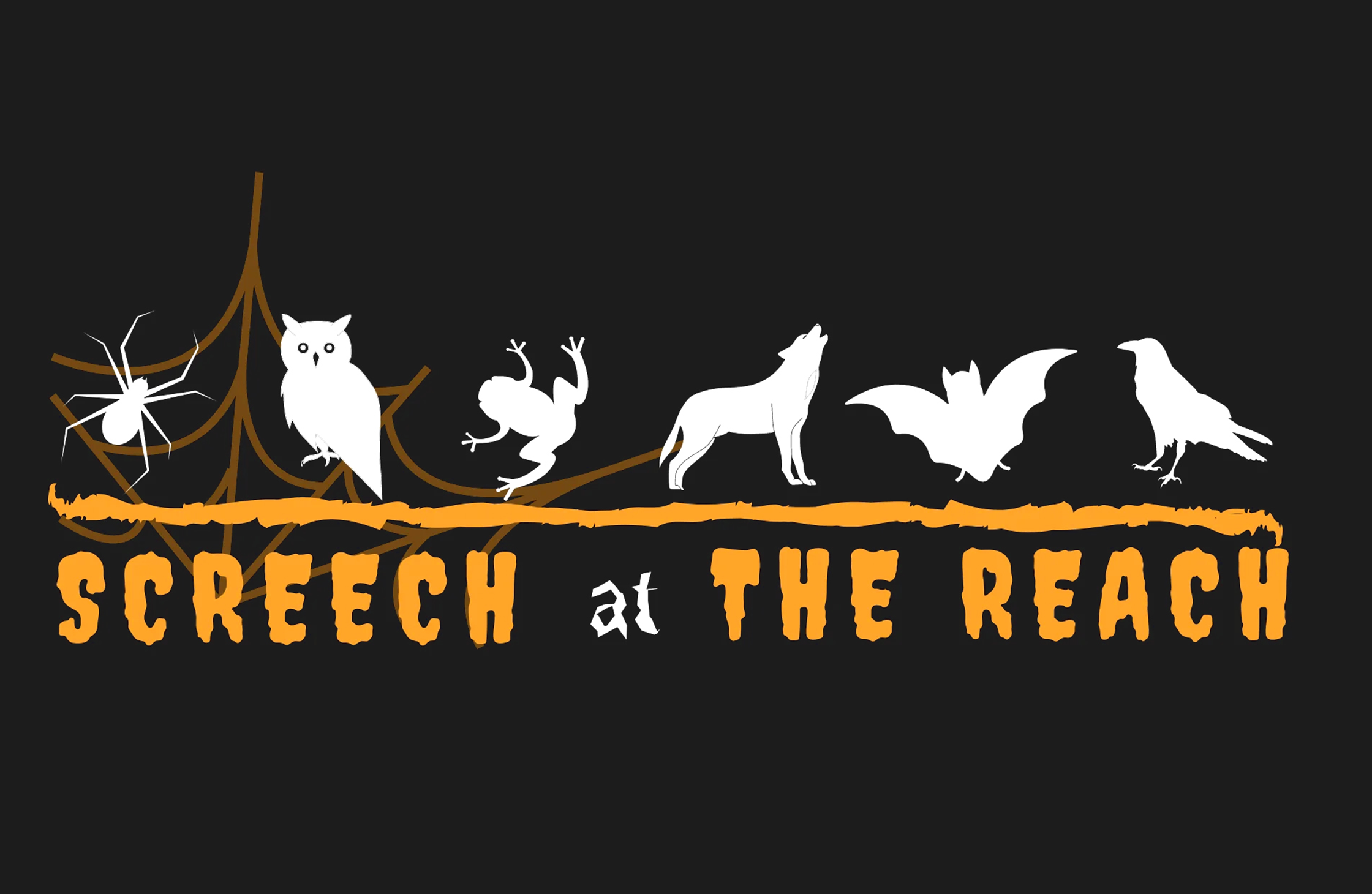There are many ways to celebrate autumn, from agriculturally-based harvest festivals to the observance of Halloween. Even within the celebrations of Halloween, there are many different flavors, from monsters and horror to the more child-friendly fascination with costumes and candy. I enjoy it all, but my favorite aspect of autumn appreciation is the spooky animals. That’s why I’m delighted to help put on a special annual event at the REACH Museum where owls, bats, spiders, and the like get their chance to shine! It’s called Screech at the REACH.
In 2014, Screech at the REACH was inaugurated by the U.S. Fish and Wildlife Service staff who manage the Hanford Reach National Monument. Looking for a way to introduce the public to the diversity of wildlife found within the Reach and celebrate National Wildlife Refuge Week, they designed an educational presentation with a Halloween theme. The newly opened Hanford Reach Interpretive Center (now known as the REACH Museum) hosted the event, and helped with activities and crafts. A decade later, this event has grown in size and scope, offering a variety of experiences that help visitors connect with nature.
The associations that ravens, owls, bats, and other creatures have with spooky themes are the subject of the original U.S. Fish & Wildlife Services (USFWS) Screech program. The ecological connections among these animals are just as fascinating as their ‘spookiness’, especially since they’re around us all the time and we are benefiting from their ecological services, whether we’re aware of them or not.
Strolling through a Tri-Cities neighborhood with mature trees at dusk, you’re likely to hear when it becomes ‘owl o’clock’. The western screech owl does not actually screech, but instead gives a series of whistle-like hoots that speed up at the end of the phrase, like a bouncing ball. These small raptors are only about the length of a robin, but they’re stocky. They prey on mice, rats, and bugs in our yards throughout the night. I always start noticing screech owl calls as the season turns cooler and the days shorten, and it reminds me that there’s a whole different world of wildlife after dark.
Even with light pollution, our local night skies tend to be dark enough that one can identify constellations and see some awe-inspiring sights, even without expensive equipment. Nighttime sounds and smells are no different, and nocturnal animals make their presence known if one is observant. It’s just a matter of stepping outside and being patient enough to allow our eyes to adjust to the dark. Resist the urge to turn on a flashlight or pull out your phone. In the words of poet Wendell Berry:
“To go in the dark with a light is to know the light. To know the dark, go dark. Go without sight, and find that the dark, too, blooms and sings, and is traveled by dark feet and dark wings.”
You may be thinking you’re better off not knowing about those dark feet and dark wings, but, come on… it’s Halloween! At Screech, we offer a guided night walk to get you familiar with some of the sights and sounds of nocturnal animals, and some night sky objects visible in autumn. Many community partners help create this experience, some of whom bring live animals to meet, owl pellets to dissect, or telescopes to look through. You can come in costume, or just dress as yourself.
All ages are welcome, general admission prices apply.
Screech at the REACH is October 25 from 5:30 – 8pm
with early entry for museum members starting at 5pm.
Learn more at www.visitthereach.us.
Pauline Schafer is the Education Manager at the REACH Museum, a Certified Interpretive Guide, and a nature nerd.


